

Driverless Government
Driverless Government investigates the impact of ubiquitous sensing on the governance and administration of smart cities. It does so, through examining the use of the Industrial Internet of Things and machine learning prediction algorithms, which have begun to supplant humans in the governance and administration of cities. The project is broken into several smaller projects to explore the implications of how this technology will affect citizens and government in the near future.
Year
2017–2018
Discipline & Research Area
Design Research, Speculative Design, Civics, Industrial IoT, Artificial Intelligence, and Machine Learning
Responsibilities
Research, Concept Development, World-building, and Data Collection
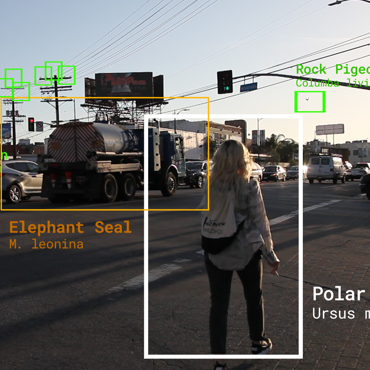

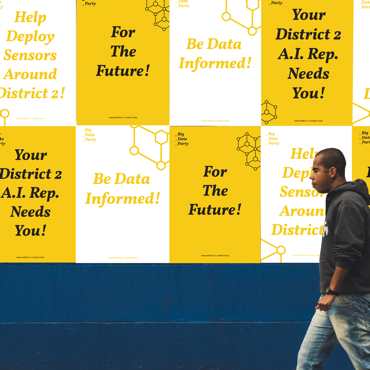

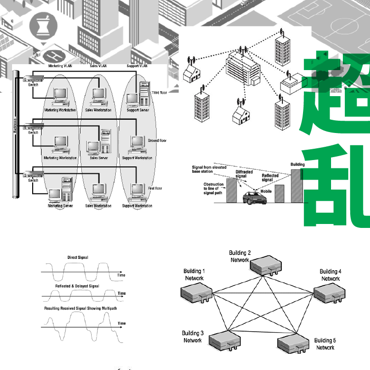

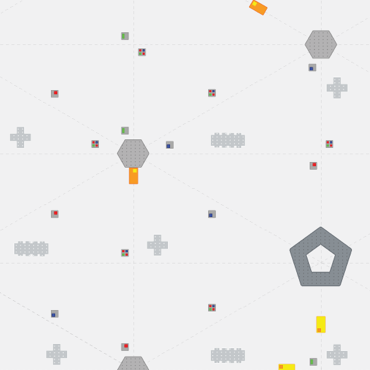





At its core, Driverless Government aims to present alternatives and possibilities that challenge the current American bureaucratic system by creating tools that allow citizens to dispute an optimization led agenda and imagines representation in new forms. To reiterate the project is broken into six smaller projects that engage with different topics such as machine learning, IoT, agency, infrastructure, council meetings, and speculative political parties. Find the links for the projects above.
As municipalities across the globe are increasingly using Industrial Internet of Things and machine learning prediction algorithms to automate labor they are pushing forward an efficiency and optimization led agenda that fails to include the history, people, and environments that this technology is situated in. Ultimately, this direction privileges technology corporations and municipalities to control the city with little input from the people who must live within it.
As a means to challenge this potential inevitability Driverless Government provides the urban citizen a framework and toolkit to create different datasets that measure the health of a city. For example, a pack of coyotes could advocate with the aid of sensors, algorithms, and speech for the creation of wildlife land bridge crossings. A human issue such as happiness could be potentially be used as a metric to measure the state of a city. City employees could deploy sensors aided with machine learning algorithms to facilitate a freeway arguing for infrastructure funding with a Department of works employee.
The "Smart City"
Central to Driverless Government is an understanding of the smart city. Smart city initiatives have been implemented worldwide in an effort to quantify living1. These initiatives have used data to measure air quality, traffic, noise, population, etc. to monitor a city’s health and inform municipal services. The assumption undertook by corporations, the general public, and elected officials are that data is necessarily good. Data can and will provide solutions to problems that can be discovered through the constant monitoring of a place or specific situation. In almost all cases smart city initiatives are collaborations between technology corporations (IBM, Cisco, NVIDIA, Google, Huawei, Intel) and municipalities who are buying the technological solutions both hardware and software to monitor the health of cities.
“Smart City is one that makes optimal use of all the interconnected information available today to better understand and control its operations and optimize the use of limited resources”
-Michael Cosgrove
IBM Smarter Solutions
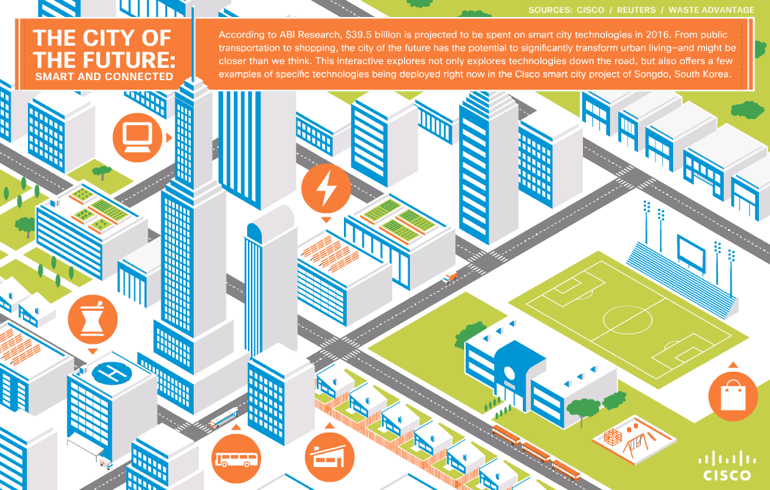

Source: Cisco / The smart city envisioned by Cisco in Songdo, Korea
Research
Research Questions
My research questions sought to broadly consider how the smart city would change to accommodate for these new forms of technology (machine learning and Industrial IoT).
• How is the current bureaucratic practice become complicated by the smart city?
• What is the everyday bureaucracy of a smart city?
As an initial starting point, I employed the technique of world building through speculative fiction to help define the different areas I would investigate and develop3. To begin, I created a matrix for four different fictional worlds that served as the foundation of the project.
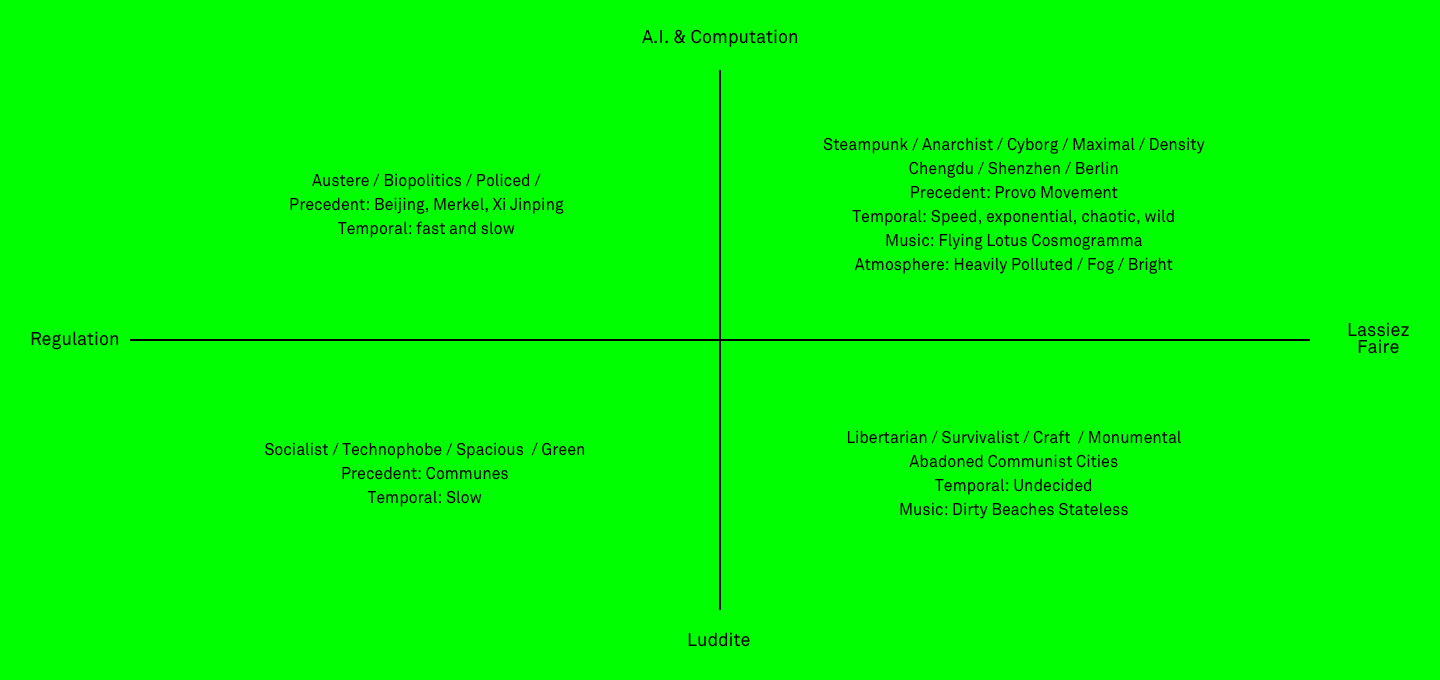

Figure 1: The matrix sought to distinctly define a world with or without computation either highly regulated or laissez-faire. This proved a great aid in defining the structure of the worlds that I wanted to design for.
In order to create a more comprehensive world, I created collages to define mood, texture, sound, and ideas by using words and images. Below are the set of images defining the four quadrants.
A.I., Computation, & Regulation
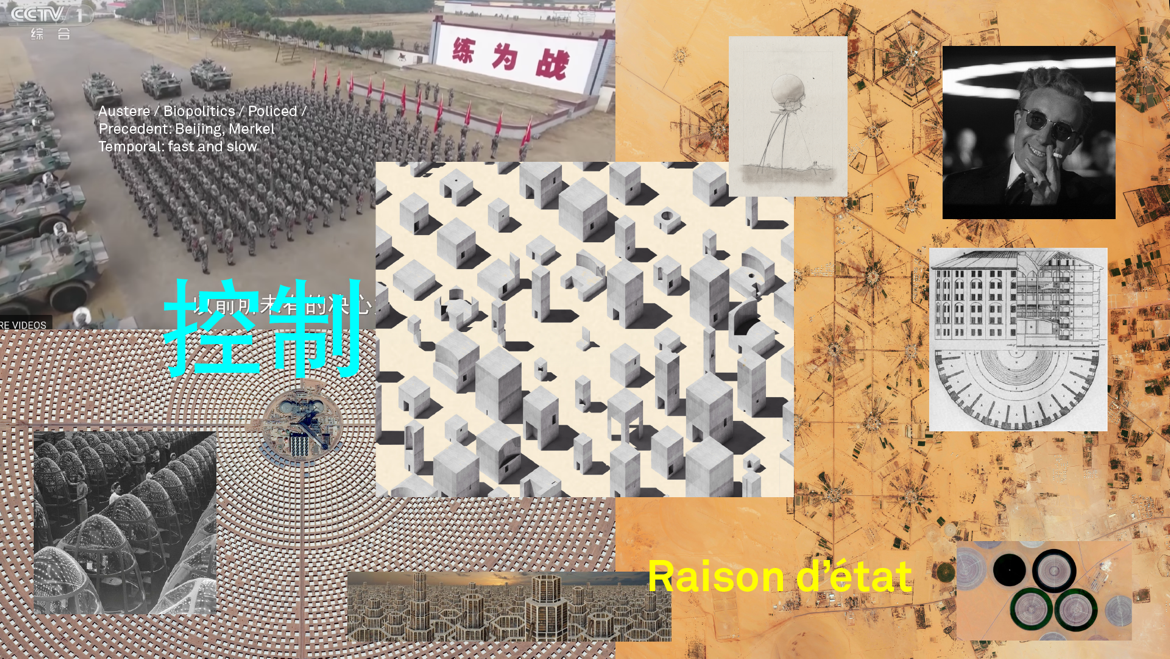

A.I., Computation, & Laissez Faire


Luddite & Regulation
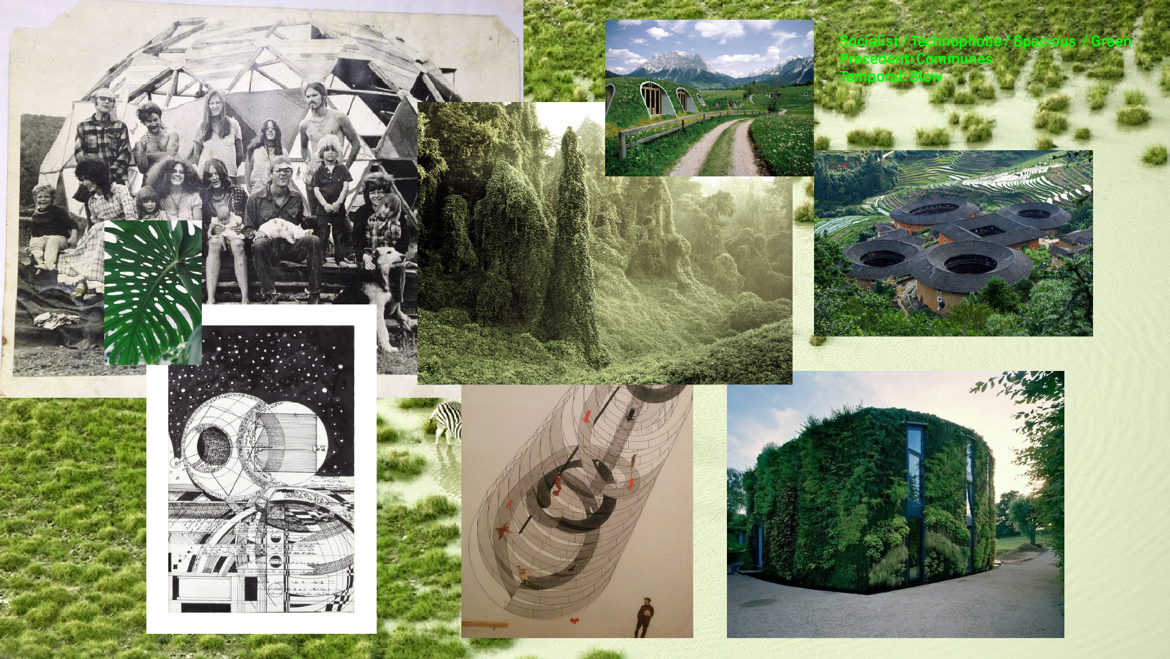

Luddite & Laissez Faire
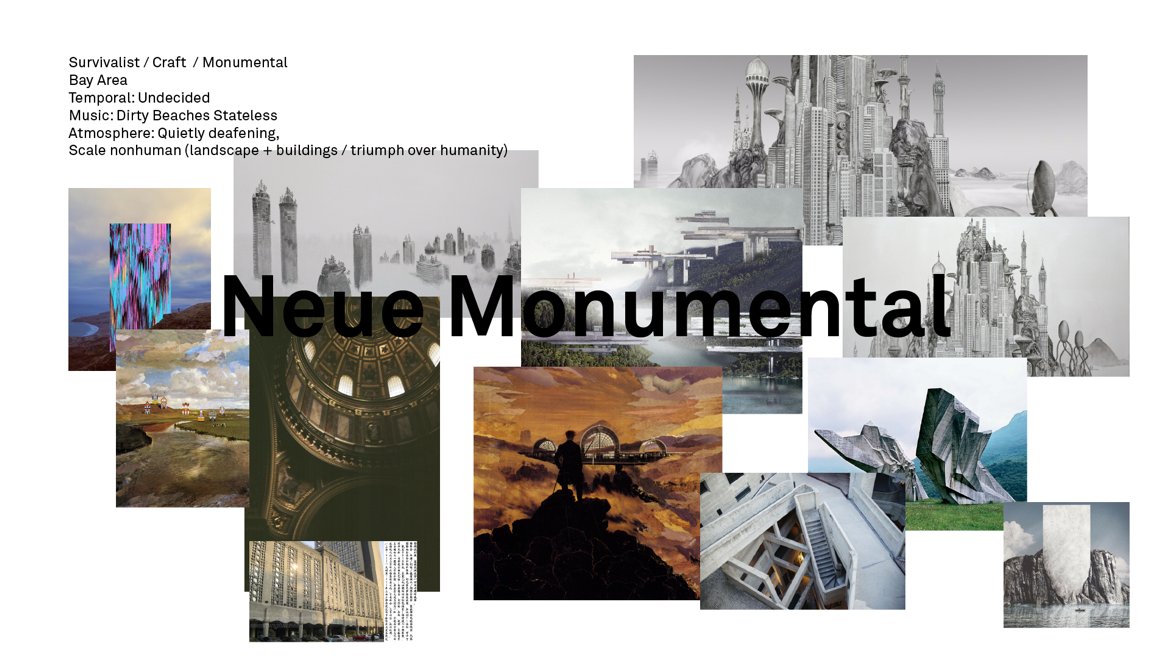

Eventually, I dropped the two lower quadrants and focused my efforts solely on the effects of A.I. and computation in both a highly and informally regulated space.
Special Economic Zones (SEZ)
Critical to this endeavor of understanding of how technology will affect cities is to look at SEZ (Shenzhen, China) as a model to think about A.I. in the governance and administration of smart cities. Specifically, SEZ act as a model to understand how space, labor, and time are changed by deregulation and economic policy. AI systems projected ubiquity in the urban environment through the implementation of industrial IoT and machine learning algorithms as seen in Chicago, London, Rio, Songdo, and many other cities aligns with these same attributes of SEZ as they start to reshape space, labor, and time. Moreover, the industrial IoT and machine learning prediction algorithms act as sovereign entities that are given parameters by people, either developers or city officials, to monitor and predict behavior. This sovereignty parallels how SEZ function as they also act independently. The system allows them to function as autonomous states that need little central intervention. Bureaucracy becomes automated.
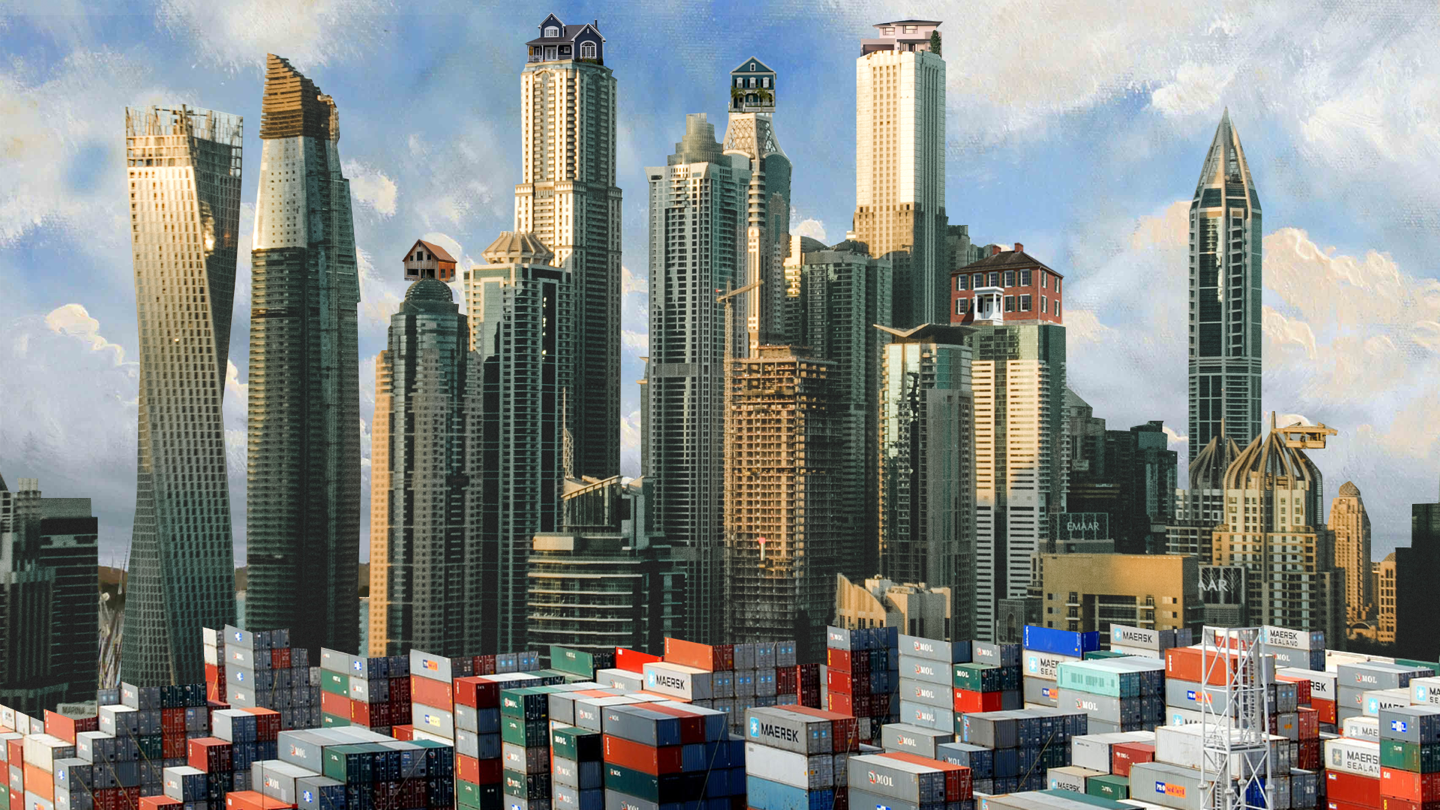

Figure 2: A collage of a special economic zone, stacking different uses (residential, commercial, port) on top of each other.
Data, Agency, Representation, and Decision Making
The increasing reliance on data and algorithms to structure humanity’s world through the control of access, presentation, and retrieval (e.g. Facebook News Feed, Amazon, etc.) skews our interactions and experiences. This system doesn’t allow the “user” to have control or agency over access to information. This cessation of control allows developers and corporations who emphasis convenience and unknowingly bias results to fundamentally change how we experience the world. We are conditioned to their focus on convenience and efficiency.
Driverless Government proposes how data can be used to advocate for constituents, issues, and non-humans. By creating a creating a framework and toolkit Driverless Government proposes how citizens can reclaim agency in their lives to advocate for what they believe in. The project adopts the existing Edge, Fog, and Cloud model to go one step further Edge > Fog > Cloud > Representative. This representative can speak on behalf of previously unrecognized stakeholders such as coyote arguing for the creation of a wildlife land bridge crossing.
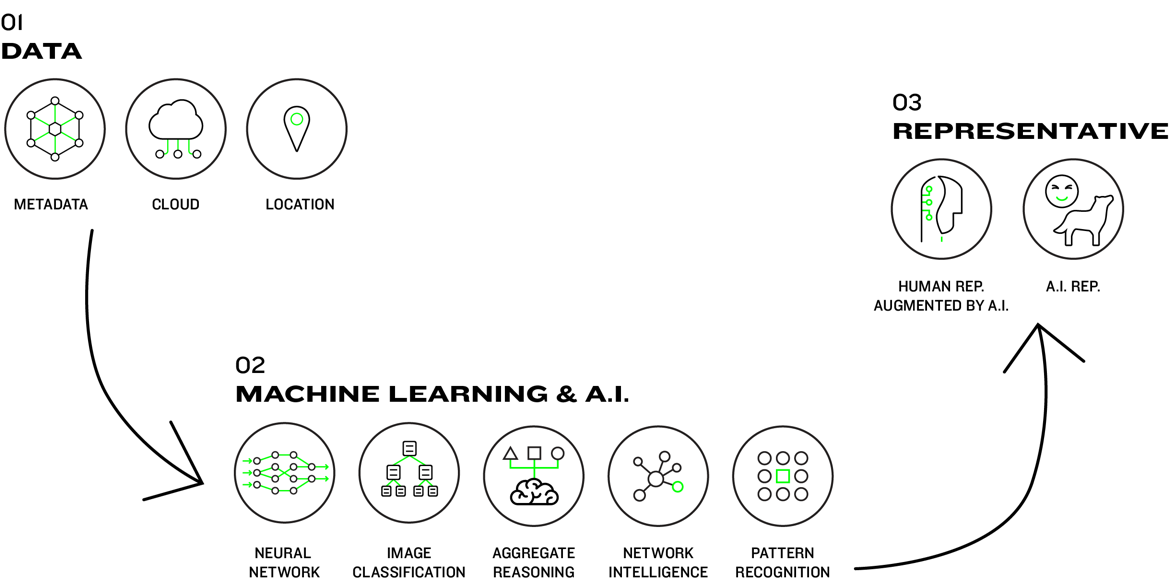

How it Works
An edge device such as a smart streetlight performs machine learning tasks on its own, communicating through the fog to other nearby streetlights. The predictive model and data generated by the streetlights are sent through the cloud to servers where engineers can monitor, interpret, and analyze the material. Edge devices already exhibit a type of “agency” by performing machine learning tasks on their own and make decisions (e.g. changing ambient light levels). In turn, the data generated by the edge devices can be aggregated to represent a group of smart streetlights. This group of streetlights communicates with a smart freeway to aid with traffic flow and regulation. All the data collected by the smart streetlights and freeways not only allows them to make quotidian decisions but also allows them to advocate for issues that are relevant to the data they have collected. For example, the group of streetlights or the smart freeway can argue for infrastructure funding as they have the data to support their arguments.
Data Parties
Driverless Government proposes a number of different parties that use data to drive their decision making. Each party uses data to varying levels, meaning while the _Big_Data_Party only uses it to inform decision making the A.I. Coyotes of the Southern California Association derive all of their decision making and argumentation from data.
The _Big_Data_Party aggregates data from its constituents to create a comprehensive portrait of the constituent base. The human representative of the _Big_Data_Party thus can understand the sentiment and issues of its base, representing their interests in the decision-making process. The freeways are similarly informed by data with a human speaking as a proxy for the group of freeways (I-5, I-110, I-101, and I-210). The happiness party representative is also informed by data, but the party’s interests are motivated by a group of citizens who prioritize the issue of well being as worthy of having a seat at the table. As previously mentioned the coyote party is driven by the data collected. Specifically, the location, movement, and quantity of the coyotes are monitored through drone machine vision and aggregated into speech to text algorithms to argue for their livelihood.


Figure 3: At this speculative L.A. city council meeting an AI coyote advocate speaks on behalf of the coyote population as the city council votes for a land bridge; a mixture of human and AI city council members look on representing freeways, happiness, and the Big Data Party.
The City Council Meeting: Discussion at the Horseshoe
In an effort to mix the digital and the physical environments I created an installation which depicts a simulated Los Angeles city council meeting. This installation builds on the previous work completed in Committee of Infrastructure which focused on the digital and virtual.
The installation envisions the physical and sonic environment to convey to an observer what automated civic bureaucracy may look like. As described by city council member of the 13th district, Mitch O’Farrell, the physical layout of the space, horseshoe, allows members to vote, listen to the public, and discuss. It was important to the create the physical space in order for observers to experience the meeting. The horseshoe layout facilitates specific interactions amongst those empowered to make decisions and those who can only voice their concerns.
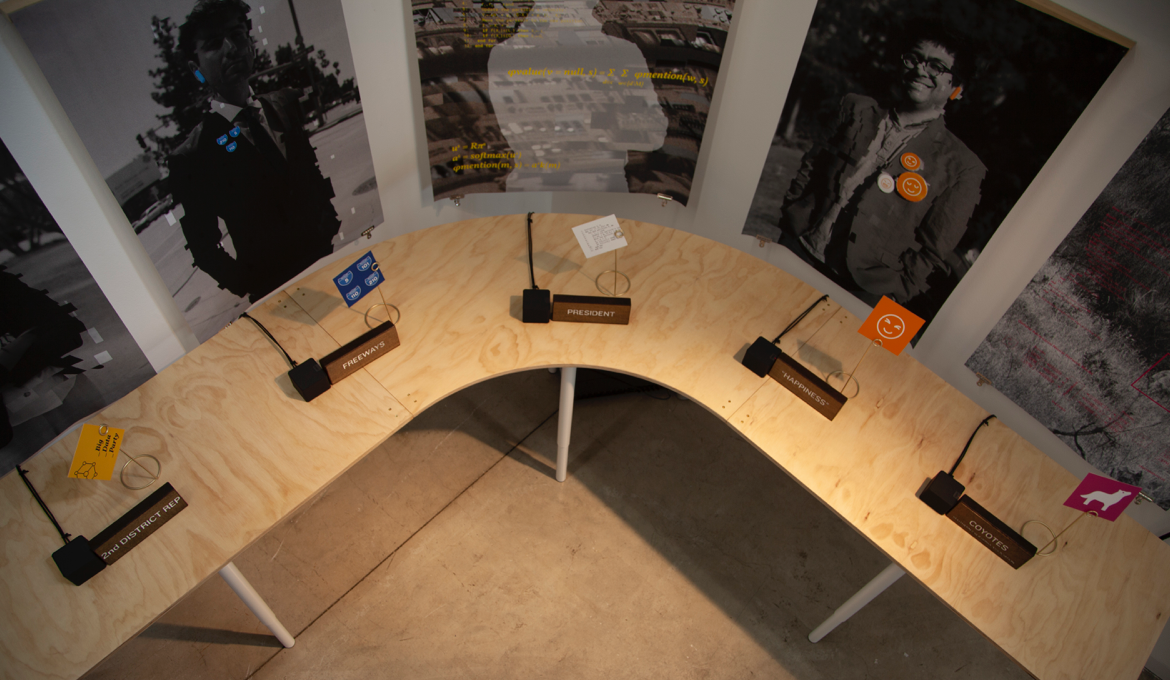

Figure 4: Top view of an automated meeting taking place with human and AI representatives.
The installation includes all the physical ephemera usually present at meetings. The speakers became voices for each representative. The screen documented and communicated agenda items and voting records. A public sentiment booth replaced the public comment lectern, constituents entered text to voice their concerns to the 2nd district representative of the _Big_Data_Party.
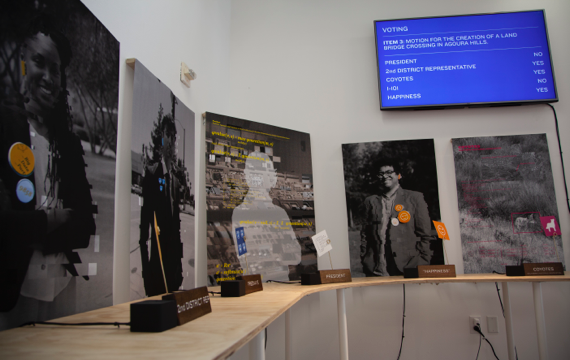

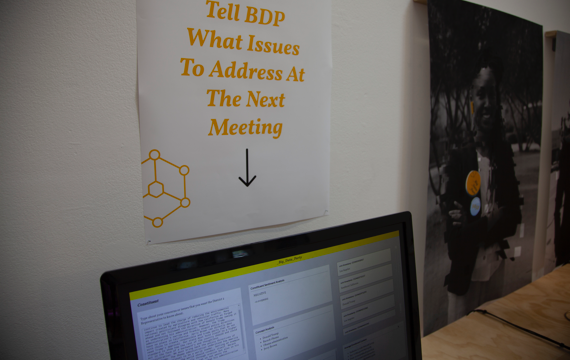

Figure 5: Similar to LA City council meeting, the video displays the vote tally for each AI and human representative.
Figure 6: The digital and physical public lectern allows members of the public to comment on agenda items or raise concerns to the _Big_Data_Party representative.
The final aspect of the meeting is the sonic environment, the observer can experience the brevity and finality of the meeting. Opinions are voiced amongst the representatives. However, similar to current meetings decisions have been made in advance of hearing public concerns.
Reflection & Development
As the nature of the project is conceptual and ongoing, my hope is to work on more direct applied applications. For example, a functioning toolkit for citizens could be developed to the point at which an actual AI representative could be made. This kind of work provokes questions of authenticity, data noise, and education. Moreover, further work could continue with game-based decision making mechanics to teach citizens how a top-down system, as proposed in Dry, could affect their livelihood. I am interested in how this intersection of technology, governance, and agency will reshape lives.
Driverless Government endeavors to think about the frightening, hopeful, and absurd outcomes of introducing artificial intelligence into the political system. I hope that the citizens will become fluent in this probable reality, learn how to advocate for themselves, and tip the balances of power.
I would like to acknowledge Ben Hooker, Tim Durfee, Norman Klein, Umi Hsu, Richard Wheeler, and Jesse Kriss for their feedback, guidance, and direction throughout the project. Additionally, I would like to thank Morgan Curie, Leah Horgan, Tyron Hampton, and Nilu Pashutani for their expertise in governance and political science.
Notes
1. Visit https://carto.com/blog/forty-brilliant-open-data-projects-preparing-smart-cities-2018/ to see a summary of all the various open data projects worldwide. Additionally, notably preceding examples such as Project Cybersyn in Chile and Songdo, Korea have delineated the challenges and problems of undertaking such an endeavor.
2. Cosgrove, Michael et al. Smarter Cities Series: Introducing the IBM City Operations and Management Solution. 2011. Accessed November 20, 2017. https://pdfs.semanticscholar.org/55e0/c011168f3993f79cdf367980be56b5edb5b7.pdf
3. Bruce Sterling on design fiction. http://www.slate.com/blogs/future_tense/2012/03/02/bruce_sterling_on_design_fictions_.html.
4. Dunne and Raby’s project United Micro Kingdom served as inspiration. The project envisioned four fictional societies organized on a spectrum of ethical and political positions, posing questions on how a future society will implement ideas such as sustainability, collectivism, and surveillance. By focusing on transportation, their project imagines how these extremes inform societies’ potential direction by provoking new structures and methodologies for nation-building.
5. Thing from the future developed by Stuart Candy and Jeff Watson of the Situation Lab is a card game that provokes participants to start to imagine the future. Stuart’s work has informed many of the ways I started to develop and continue to advance the project. http://situationlab.org/project/the-thing-from-the-future/
© Jason Wong. All Rights Reserved.
